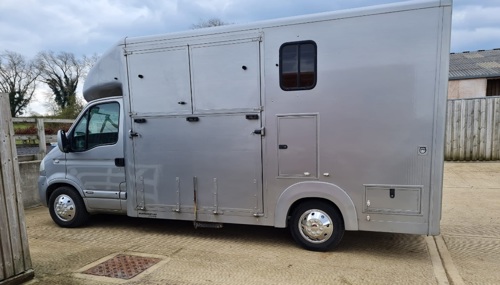The Not-So-Secret Diary of Diva the Shetland Pony – Build Quality
03 March 2025
By far the most common horsebox used by non-professionals is the 3.5-tonne, either van or coach built.

There are multiple makers, and it has to be said that some are built more strongly than others. A couple of years ago, when my sister and I were looking to get a newer lorry, we drove down to Kent to look at a secondhand one that was with the manufacturer for resale.
To the eye it looked a lovely box, and had some nice safety features, like being able to bring the horse through the rear door in an emergency. However, when the owner left us to look around by ourselves, I pushed the side wall and to my horror it bowed outwards! Now, I am not sylphlike, but neither am I anywhere near the weight of a Shetland pony, so I shudder to think what it would have been like if a 500kg horse had leant against it in transit.

Our old box was much more solidly built, and we despaired of finding one built to the same standards that we could actually afford to buy.
One thing we did learn is that lorries offering a high payload (we were looking at coach built) were generally like the one we viewed, in that they lacked strength in the structure. The weight saving has to come from somewhere, and it seemed that strong side walls are the first victim. Adverts often state reinforced bulkhead, which is extremely important, but people need to be aware that the whole body needs to be strong too. A flashy paint job may hide deficiencies.

As we use the box for one horse or two Shetland ponies, we concentrated our search on ones with payload that would cover this, but not be up at 1,200kg like the one viewed. Thankfully, we found a Bloomfields lorry with sufficient payload and lovely sturdy build quality, and we have no regrets in buying it.
